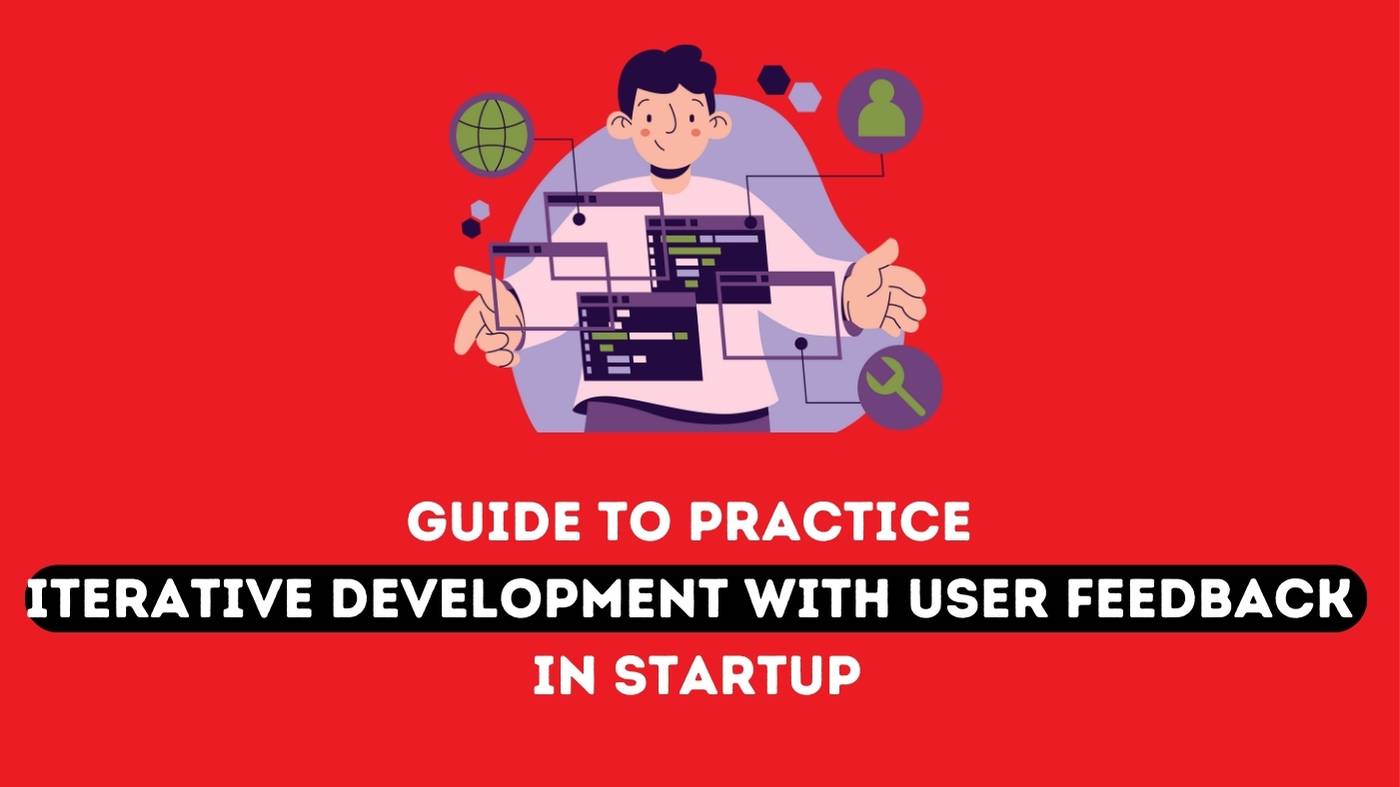In the fast-paced world of startups, iterative development is key to launching products users love. This development approach relies on continuous user feedback loops to refine and enhance products rapidly.
For startup founders, mastering the iterative process can make the difference between building an also-ran product versus achieving product-market fit. This guide covers everything you need to know to leverage user feedback for iterative development success.
The Iterative Process Explained
Iterative development breaks product creation into rapid, repeated cycles of building, measuring, and learning. Each iteration improves upon the last based on user feedback and data. Key aspects include:
- Developing a minimum viable product (MVP) with just core features to get to market quickly.
- Releasing early versions to small groups for feedback instead of waiting until “ready.”
- Using feedback to refine and add features in new iterations released in weeks not months.
- Continuously testing with users through real-world usage not just surveys and interviews.
- Adapting and pivoting product design based on feedback and metrics from each iteration.
- Focusing on solving customer problems not just implementing features.
This agile, flexible approach stands in contrast to rigid sequential development (i.e. fully planning, designing, building, and finally releasing). The iterative philosophy centers on “ship fast, fail fast, and learn fast.”
Why Iterative Development Matters for Startups
Iterative development provides startups with immense advantages:
- Reduces wasted time and effort by ensuring you build what users want.
- Early customer feedback surfaces issues and opportunities while still cheap to address.
- Enables adapting quickly based on market reaction and new technology.
- Fosters closer connection with customers through ongoing feedback dialog.
- Facilitates continual incremental improvements to the product.
- Allows validating or invalidating critical assumptions early.
Overall, it helps startups maximize learnings while minimizing expenditure.
Best Practices for Iterative Development
Follow these practices to make iterative development successful:
- Choose an agile development framework like Scrum or Kanban. These structures enable rapid iteration.
- Break work into small, manageable chunks. Don’t overload iterations.
- Define metrics to gauge iteration success. Clarify what data to analyze.
- Automate build, test, and release processes for speed.
- Focus iterations on high priority user problems and needs.
- Allot 20% time for innovation and experimentation each iteration.
- Assign clear iteration owners and stakeholders to streamline decision making.
- Conduct retrospectives after iterations to identify process improvements.
How to Incorporate User Feedback into Iterations
User feedback is the fuel that powers iterations. Integrating it effectively involves:
- Gathering broad feedback Conduct user interviews, surveys, reviews, and focus groups to get wide-spanning feedback.
- Embedding targeted questions Ask specific questions during usage to get precise, in-the-moment feedback on features.
- Analyzing feedback data Break down and categorize feedback to surface key issues, opportunities, and insights.
- Prioritizing feedback Determine which feedback has the highest urgency and user impact for inclusion in upcoming iterations.
- Defining implementation plans Detail how priority feedback translates into specific product changes and updates for development and design.
- Developing required features
Build and optimize the functionality based on the implementation plans. - Releasing updated iteration Get the new iteration in users’ hands quickly to evaluate impact of changes.
- Reviewing metrics and feedback Understand if implemented changes achieved the desired improvements via metrics and new feedback.
- Feeding insights into future iterations Utilize learnings to shape and prioritize upcoming iterations for a continually improving development loop.
Tools to Enhance User Feedback Management
Specialized tools exist to facilitate gathering, organizing, and analyzing user feedback:
- Collecting feedback: SurveyMonkey, Qualtrics, UserVoice, AskNicely
- In-product feedback: Appcues, Chameleon, Hotjar
- Analytics: Amplitude, Mixpanel, Google Analytics
- Sentiment analysis: OpinionAnalyzer, Sentimental
- Feedback management: Canny, Userecho, FeedbackFruits
Proactively seeking feedback directly from users is always preferable to relying just on analytics and behavioral data.
Key Metrics to Measure Iteration Effectiveness
Metrics help quantify the return from each iteration’s development efforts and changes. Useful metrics include:
- Increased customer lifetime value or retention rates
- Higher product usage or adoption of new features
- Stronger Net Promoter Scores or satisfaction ratings
- Lower churn or cancellation rates
- Faster sales cycle or time to first use
- Increased referrals or sharing by users
Continually correlate feedback-driven changes with key business and product metrics to verify progress.
Overcoming Iteration Development Challenges
While transformative when implemented well, iterative development also comes with hurdles like:
- Prioritizing conflicting feedback from diverse users
- Balancing innovation with addressing tech debt and bugs
- Preventing short-term iteration metrics from obscuring bigger picture
- Maintaining team velocity and focus over long product lifetimes
- Securing buy-in across teams and keeping stakeholders aligned
With sufficient planning and commitment, these obstacles can be overcome to make iterative development pay dividends.
In summary, embracing iterative development powered by continuous user feedback helps startups build market-winning products faster. Adopting these best practices will equip you to turn your MVP into an evolving product your customers love.

